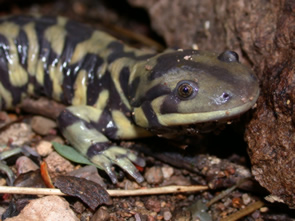
Ambystoma tigrinum
Photo by JD Willson
Description: The tiger salamander is the largest terrestrial salamander in the world and can reach lengths of thirteen inches. Tiger salamanders are very heavy bodied with large, wide heads and small eyes. They have brown, black, or blue bodies with yellow to olive brown irregular blotching. Their belly is olive to cream in color with slight dark marbled patterning. The larvae have wedge shaped toes that distinguish them from all other mole salamander which have round toes as larvae. Larvae have olive to black bodies with some random spotting and a cream colored body.
Habitat/Range: Tiger salamanders can be found along the coastal plain of North Carolina. They range from Florida and northern Mexico to southern Canada and occupy many Rocky Mountain, midwestern, and southeastern states. They are extremely subterranean. Unlike most other salamanders, tiger salamanders dig their own burrows and rarely emerge. During the breeding season they can be found in vernal pools, fishless ponds, and slow moving streams.
Diet: Tiger salamanders are generalist predators. They feed on anything from zooplankton to crayfish, other salamanders, and even mice.
Reproduction: Breeding takes place under water. The males will arrive at the breeding ponds as early as late December, and females generally arrive a few weeks later. Breeding may even take place under ice. The eggs are laid in gelatinous masses attached to submerged twigs and contain over a hundred eggs. The larvae hatch several weeks later and metamorphose in 10 weeks to six months.
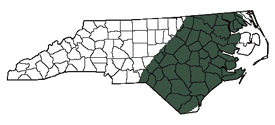
The shaded region represents the range of the tiger salamander in North Carolina.
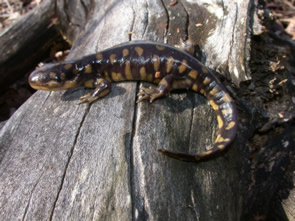
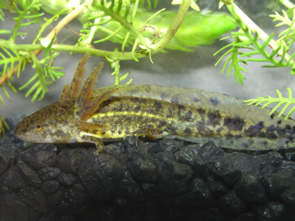
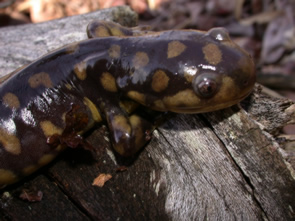
Some tiger salamanders may become sexually mature while retaining larval stage morphological features, a condition known as pedomorphosis.
Photo
by D Stevenson
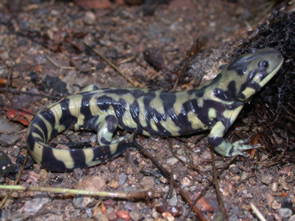
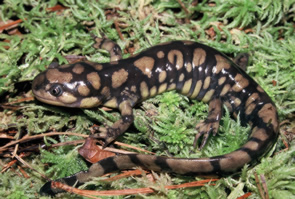
Photo by JD Willson
Photo by John Jensen
